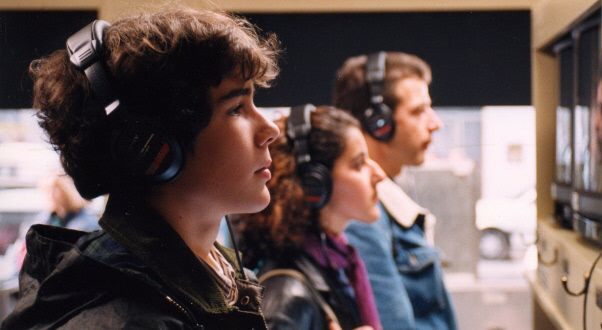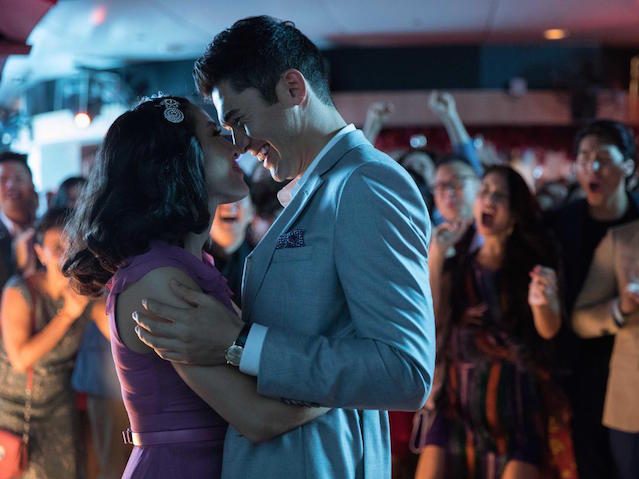Cultural critic Rey Chow discusses her new book—including how the acclaimed Austrian filmmaker’s “staging of the extreme” gestures toward the pornographic.

January 24, 2013
“Pornography, it seems to me, is no different from war films or propaganda films in that it tries to make the visceral, horrific, or transgressive elements of life consumable. Propaganda is far more pornographic than a home video of two people fucking.”
–Michael Haneke, interview with Kinoeye Magazine
Does Michael Haneke make pornographic movies? The once-controversial Austrian director boasts an impressive oeuvre of “difficult,” critically revered work. His films—which include, most notably, the home-invasion nightmare, Funny Games, the dysfunctional-courtship drama, The Piano Teacher, and 2010’s menacing village fable, The White Ribbon—explore states of social disintegration, often as a kind of Arendtian indictment of a banal, bourgeois complicity in a fragmented, late-capitalist order. His signature stark brutality has garnered him a devoted fan base and tremendous critical acclaim. His newest film, Amour, which is currently screening in the US, has already captured the coveted Palme d’Or at Cannes, the New York Film Critics Circle prize for Best Foreign Film, and the LA Film Critics Association’s award for Best Picture—surely no surprise to anyone who has followed the increasingly clamorous praise surrounding Haneke’s films over the last decade.
Seemingly in contrast to his well-earned reputation for intellectual rigor, Haneke’s films are visceral and at times intensely shocking, often taking on the stylistic qualities of that more low-brow and oft-maligned genre, the horror movie. Much of his content also fits the standard descriptors of pornography: explicit sexual material (The Piano Teacher), graphic scenes of violence (Caché), active engagement with the viewer (Funny Games). However, despite its ostensibly explicit nature, a stable definition of pornography remains elusive for the American public—a predicament famously characterized by Supreme Court Justice Potter Stewart’s quip, “I know it when I see it.” And as jarring as they are, the moments of obscenity found in Haneke’s films are similarly difficult to categorize.
Writing recently for the London Review of Books, Gilberto Perez identifies a boundary that Haneke’s films—both thematically and aesthetically—often cross: the line between acceptable and unacceptable suffering for the audience. Haneke, Perez argues, deliberately exceeds the limits of “permissible displeasure” in films like Funny Games in order to implicate the audience in their enjoyment of cinematic crudity, and even cruelty. Could it be the crossing of this boundary that makes a film pornographic? Haneke’s most recent work, Amour, follows the deterioration of an elderly woman, Anne, and the desperate efforts of her husband, Georges, to provide her physical and emotional comfort during her remaining days. Throughout the film, Anne and Georges repeatedly remark that they do not want anyone else (not even their own daughter) to see Anne in her humiliating state. But the audience, of course, bears witness to the entire agonizing ordeal, up to and including Anne’s death. At the screening I attended, during a scene in which Georges tries in vain to force his ailing wife to swallow water and she lets it dribble from her mouth, an audience member cried out in exasperation, “This is fucking unbelievable!” The outburst confirmed for me both Perez’s argument that Haneke’s films exceed the acceptable limits of audience suffering, and that our watching is yet another act of infringement, an entering into an intimate and uncomfortably verboten space, not unlike the illicit nature of watching a sex tape. (This breach is further underscored by Haneke’s limited choice of setting: The only scene in Amour that doesn’t take place inside the increasingly claustrophobic rooms of the couple’s apartment is a moment when Georges and Anne are at the orchestra—an outing Haneke chooses to represent simply with a shot of rows of seated audience members, as though reflecting those watching Amour back at themselves.)
According to cultural critic Rey Chow, Haneke’s insistence upon the viewer’s recognition of his or her own engagement with the film—usually at the most distressing moments in the narrative—falls within a particular modernist trajectory. In a chapter of her latest book, Entanglements, or Transmedial Thinking About Capture, Chow discusses the modernist tendency toward pornography by examining a theoretical practice that may have interested my frustrated fellow audience member: reflexivity (or, as Chow concisely puts it, “thought becoming conscious of its own activity”) and the ways in which this “laying bare” of the mechanisms of representation can, in fact, become porn. Chow traces modernist reflexivity and its elision with the pornographic through readings of Brecht and Benjamin, and turns to Haneke’s films as contemporary examples of that elision. In her analyses of Funny Games and Benny’s Video, Chow points out how frequently the director’s particular staging of mediality—in other words, the moments at which the film calls attention to media such as video cameras, audio recordings, and computers, and thereby also calls attention to itself as such—overlaps with the staging of violence. The Margins asked Chow to expand on her thoughts about Haneke’s work and, in particular, to explore how the self-reflexive elements of his films correspond to the pornographic.
Rey Chow:
We all tend to think we know what the pornographic is; indeed, we live in a time when sex and violence, which are usually assumed to be what the pornographic is all about, have become utterly mundane. Because we encounter sex and violence everywhere, we are no longer shocked by them. To achieve any visibility these days, portrayals of sex and violence must outdo themselves. The trend, in other words, is for such portrayals to be increasingly extreme, as though they must keep surpassing whatever threshold of extremity that was previously reached. It is this compulsive movement of reaching beyond accepted thresholds that I associate with the pornographic. As I indicate in my book, for some, the pornographic has to do with a perceived numbness and indifference to suffering on the part of some audiences. So the term is used to articulate audience apathy as well as the spectacle of sex and violence. To these two aspects, I would like to add an emphasis on the tendency to transcend existing limits.
Now, if porn understood in this sense is indisputably a part of our mass culture, might it also manifest itself in areas that are more avant-garde and politically progressive? What are some forms of self-undoing and self-surpassing—going beyond thresholds and limits—that we can find in critical and cultural theory, for instance? To respond to these questions, I suggest, it would be productive to rethink how reflexivity—that is, thought becoming conscious of its own activity—which is the hallmark of all interesting theoretical writing, tends to operate. In this connection, the prevalent trope adopted by many theorists engaged in one type of reflexivity or another, the trope of laying (something) bare, is fascinating. From the Russian Formalists to Giorgio Agamben, the notion of bareness seems an inexhaustible source of intellectual stimulation. Why?
And how is this process of laying bare “conveyed” in a medium such as film? Literally, how does one portray the state of bareness in a medium that is all about seeing things? There is something in Michael Haneke’s work that strikes me as particularly relevant, not only because he likes to portray violence through different media but also because he is so good in showing that the violence is pointless. In films such as Benny’s Video and Funny Games, the audiences of such violence are also the perpetrators, and they seem completely apathetic to the suffering of others. It is as though any hint of sympathy or empathy—the type of emotion that binds us to others in fellowship—would “downgrade” or contaminate the purity of the evil condition being portrayed. This staging of the extreme (extreme cruelty, extreme violence, extreme indifference), which is not allowed to be diluted, is what I consider pornographic, perhaps more so than the commonplace images of sex and violence. In our time, porn is a kind of ethos, a way of thinking, and it may or may not have to do with showing genitals.



